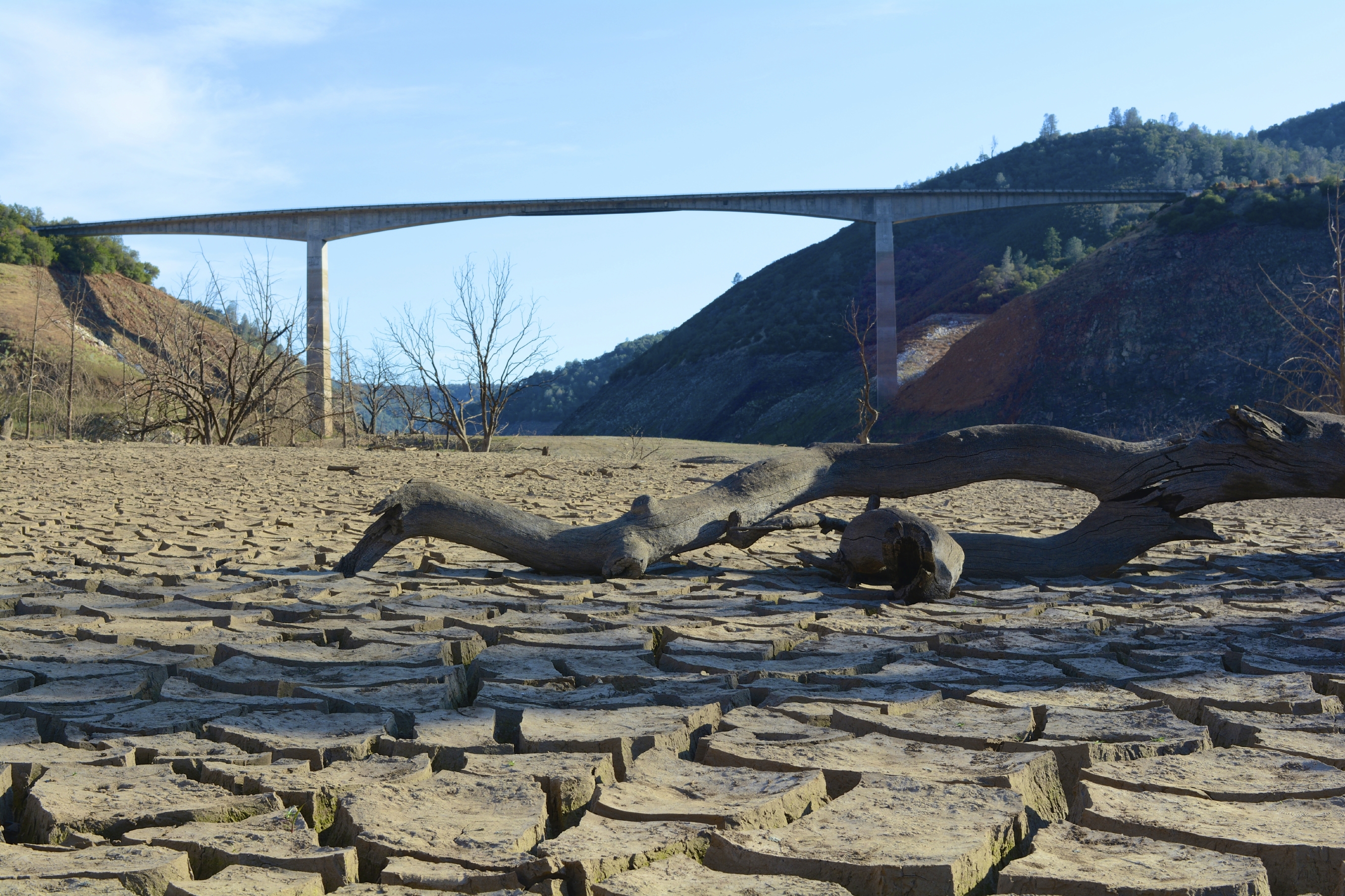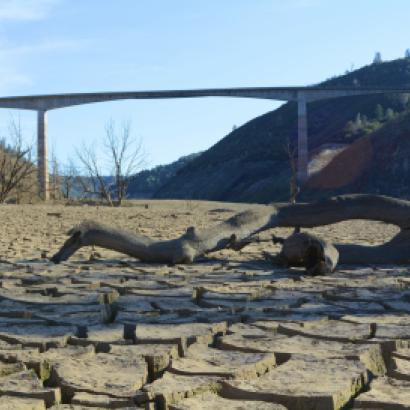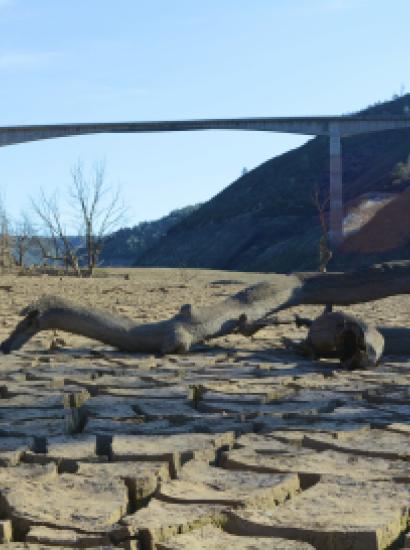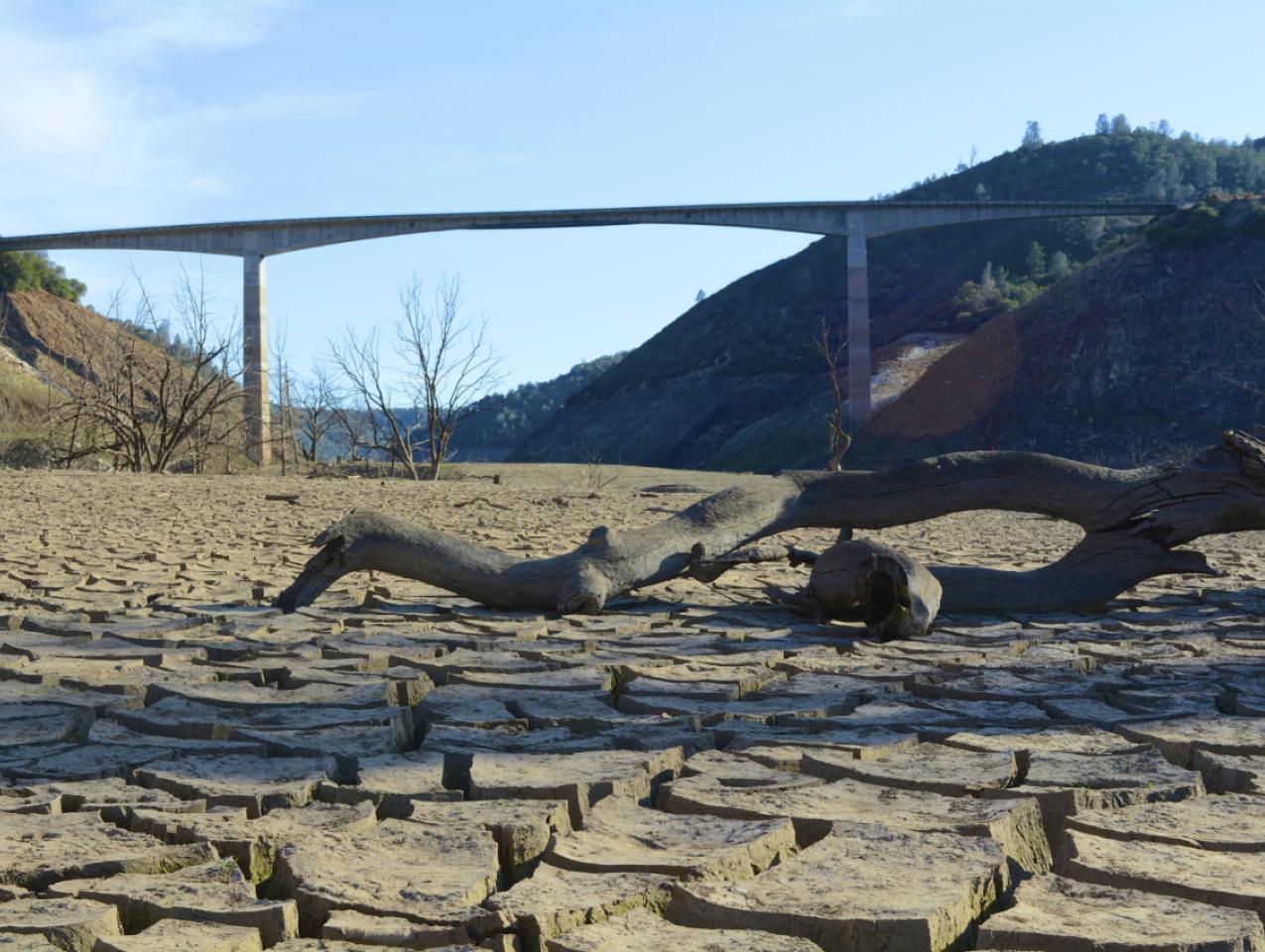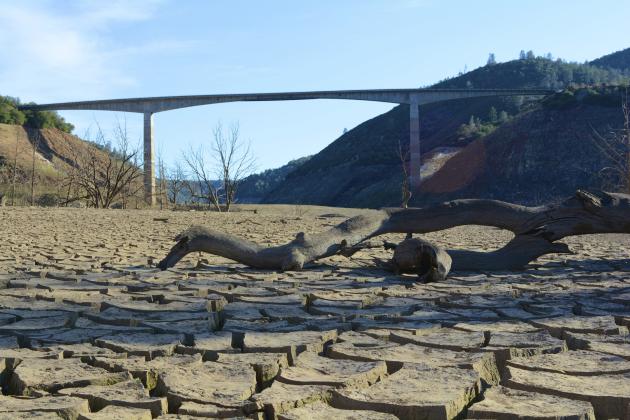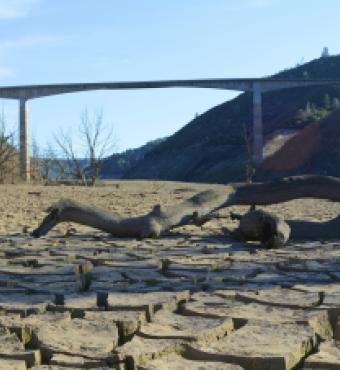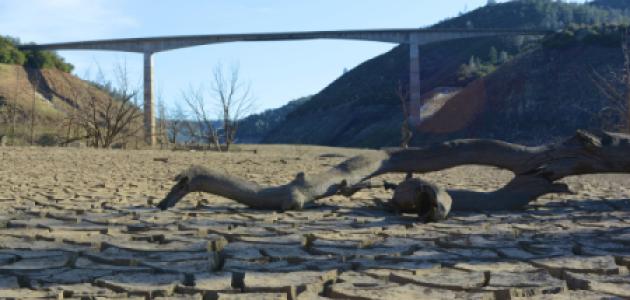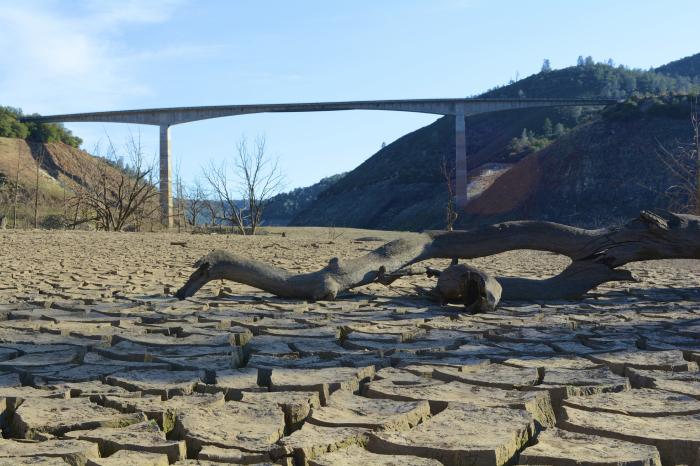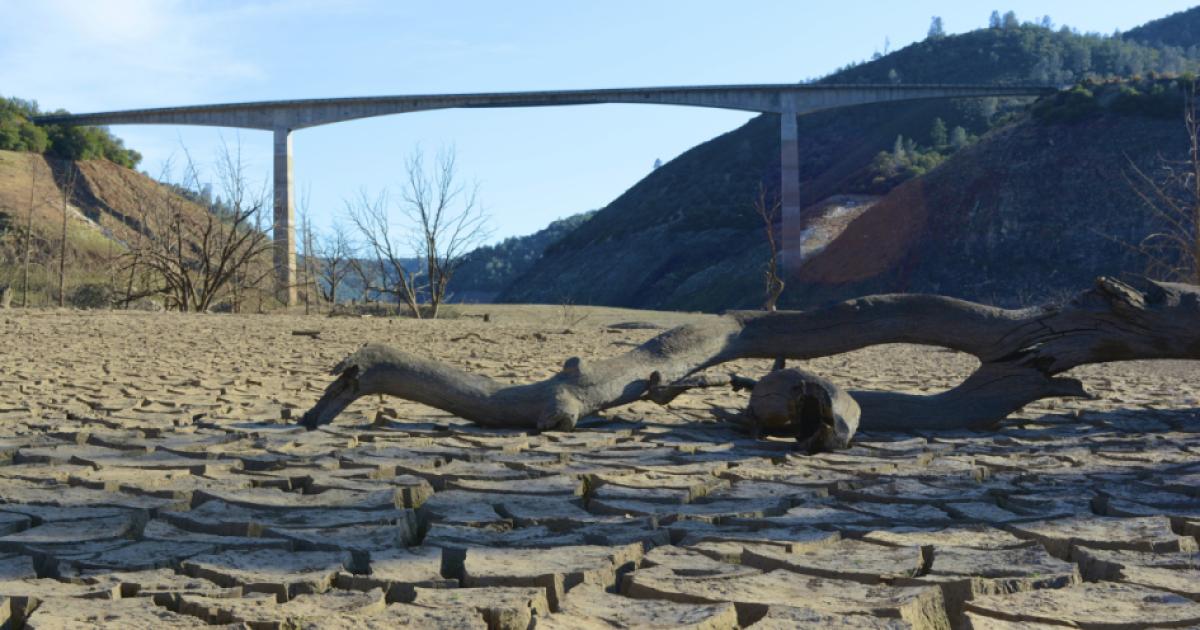- Energy & Environment
- Politics, Institutions, and Public Opinion
- State & Local
- California
If you’re in the market for a lighthearted look at the outré existence that is high-end Southern California, might I suggest L.A. Story, a 1991 comedy starring Steve Martin as Harris K. Telemacher, a local weatherman who’s lost his way spiritually and professionally.
Part of Telemacher’s problem: the weather in Los Angeles never changes, every day offering abundant sunshine and not a trace of rain. Martin’s character becomes so bored with his job that he begins to tape his forecasts days in advance (“sun, sun, sun”), which eventually costs him job (spoiler alert) when the unexpected happens—a torrential storm hits the Southland.
In real life, California’s weather is no laughing matter these days. Over fourth-fifths (81%) of the Golden State is now experiencing “abnormally dry” conditions, according to this US Drought Monitor Map released last week. Less than one-fifth of the state has avoided dry or drought conditions entirely.
It’s a remarkable climate shift in a short period of time: just a week earlier, 82% of California was experiencing no dry or drought conditions. Three months ago, less than 5% of California was abnormally dry.
As such, this represents one of the more unlikely conversations to be having in California at this time. It was just eight months ago that the Golden State was declared officially free of drought—California having experienced some form of drought for 376 consecutive weeks, according to the University of Nebraska–Lincoln’s National Drought Mitigation Center. That’s because last winter (meteorologically, a time stretch from December 1 through February) was the wettest in the United States as a whole since records started being kept near the end of the 19th century.
And this winter’s forecast?
Though ultimately it’s a guessing game, the federal government’s 2019–2020 Winter Outlook sees higher-than-average temperatures in California with variable precipitation (that includes lower levels of rain in Northern and Central California).
How does this pertain to California’s state government?
For Gov. Gavin Newsom, already beset by this fall’s horrific wildfires, the possibility of a prolonged natural disaster presents this question: to what extent does Sacramento attempt to change everyday life in California?
Newsom’s predecessor, Jerry Brown, faced the same quandary when dealing with California’s drought conditions—and he didn’t blink. In April 2015, Brown imposed mandatory water restrictions for California residents, businesses, and farms. California towns and cities were required to reduce their water usage by 25%.
But Brown didn’t stop there. In May 2018, he signed a pair of bills ushering in permanent water restrictions for California—an initial limit for indoor water use of 55 gallons per person, per-day in 2020, dropping to 50 gallons per person by 2030.
However, that policy change didn’t include a new standard for outdoor water use. That will be determined by October 2021. Translation: state regulators (and the governor, as he travels California’s backroads) will be hearing from farmers, car-wash operators, and homeowners with swimming pools and exquisite verdant landscapes—i.e., most everyone with skin in the game when it comes to water allotment.
As it turns out, water was both a source of contentment and frustration for Newsom in his first year as California’s 40th governor.
On the contented side, Newsom earlier this summer traveled to a small town outside Fresno to sign SB 200, which created a $1 billion fund for California communities struggling to maintain their water systems (statewide, 326 water agencies serving nearly one million Californians are out of compliance with state standards on contamination levels or treatment techniques).
But where the governor ended up all wet: wanting to impose a $140 million tax on residential, commercial, and agricultural water customers to fund safe drinking water in disadvantaged communities (Newsom wanted to charge between 95 cents and $10 a month). However, Newsom gave up on the tax as part of a larger give-and-take with state lawmakers that brought a quick resolution to this summer’s budget debate.
Meanwhile, there are other watery rapids that California’s governor must navigate in the near future.
In September, Newsom vetoed SB 1, which would have adopted into California law components of the federal Clean Air Act, Clean Water Act, and Endangered Species Act as they existed during the Obama administration (the law would have expired in January 2025 —i.e., at the end of a second Trump presidential term).
Having disappointed environmentalists with that veto, does Newsom look to burnish his green credentials in 2020 by tangling with the Trump administration over its new plan to govern California’s water usage and a possible effect on state endangered species (the Golden State’s long-running debate over fish vs. farmers)?
Moreover, talk of drought invariably will lead to talk of water storage capacity. That takes us to the seemingly endless fight over Shasta Dam, California’s largest reservoir (the water inside its 400 miles of shoreline supplies the Central Valley). Raising the dam 18 feet, as the Trump administration wants to do, would expand its storage capacity by 14%. Environmentalists (and state officials) claim that raising the dam would violate California’s Wild and Scenic Rivers Act.
And: the shaky condition of California dams. According to federal records, six high-hazard dams are deemed poor or unsatisfactory. That includes the state’s second largest reservoir, Lake Oroville. In 2017, a crack in that dam’s spillway caused a near-diluvial disaster for Sacramento, which lies about 75 miles downriver from the reservoir.
And as he prepares for next year’s State of the State Address, Newsom might ponder this CalMatters op-ed by Kim Delfino, the California director of Defenders of Wildlife.
In that column, Delfino questioned whether the governor and his administration are capable of looking beyond “the old binaries” (a phrased used by Newsom in his 2019 State of the State Address in talking about water (“We have to get past the old binaries, like farmers versus environmentalists, or North versus South. Our approach can’t be “either/or.” It must be “yes/and.”)
Speaking of binaries, Newsom’s benefited from one throughout his time in public office, be it as the mayor of San Francisco or as California’s lieutenant governor and governor: he’s created a brand as a lawmaker who takes chances and thinks outside the box and ahead of the curve (same-sex marriage, recreational marijuana legalization).
California’s governor also has fashioned himself as something of a progressive intellectual—for example, with his 2014 book Citizenville that outlines how technology can transform the way the public sector interacts with government.
My point is: challenge Newsom’s ability to think beyond one dimension, as Delfino did in her CalMatters column, and it might prompt the governor to take another swing at water policy in next year’s big address.
Stay tuned for Newsom’s next move.
Whenever that is, if the governor’s lucky, it will be raining that day in California.







